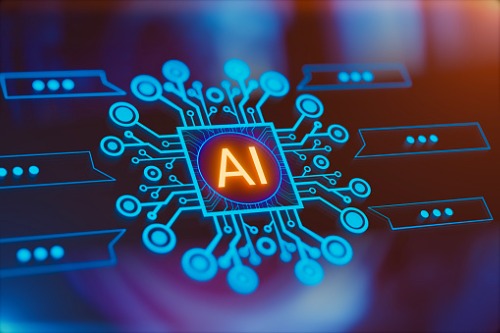How generative AI can transform supply chains

Authored by HDI
From purchasing to product development and logistics, generative AI is already improving numerous areas within supply chains. Experts believe it could transform the sector, but like any nascent technology, there are challenges and limitations to consider.
“Generative AI is unlike any technology we’ve ever seen before in supply chain. It’s a game changer.” This bold statement comes from an IBM blog post in late 2023. More than just the latest hype, generative AI (GenAI), the authors claim, will bring much-needed innovation to a sector that needs “significant reinvention”. Currently, supply chains are full of siloes and legacy technologies, creating “unnecessary costs, increased execution latency and a suboptimal customer experience”.
A subset of artificial intelligence, GenAI shot to public attention in late 2022 with the release of ChatGPT. Unlike more traditional AI, which depends on explicit programming, GenAI derives insights from data, enabling it to create imaginative and unique outputs such as texts, audio, images, videos, simulations or codes without the need for labels or human supervision.
The technology is already making its mark on the supply chain sector. There are bots for rapidly negotiating cost and purchasing terms with vendors; automated development processes to improve product design; and programmes that can produce near-instant responses to logistics queries, from part location to cost and efficiency. Answering questions like, “How is my vendor performing?” is becoming increasingly simple, rather than a complex exercise in combining reports.
These capabilities mean GenAI looks set to automate a lot of menial, repetitive work that consumes major chunks of time for supply chain professionals. Indeed, recent research by Accenture suggests 43 per cent of all working hours across the entire supply chain will be impacted, with workers in production, planning, expediting and procurement being the most affected. Far from eliminating human value, though, it will allow these workers to reallocate their time to more value-added activities, enhancing overall efficiency and productivity in their role, the report suggests.
GenAI set for widespread adoption in 2024
This year could be a watershed year for GenAI adoption in supply chains. A January 2024 survey by Gartner found half of supply chain leaders plan to implement the technology in some form over the next 12 months. Almost two thirds of respondents said they will hire dedicated staff and experts to help them do this.
“The challenge for many of these organizations over the next 12 months will be in scaling their pilot projects to broader adoption,” says Noha Tohamy, VP analyst in Gartner’s supply chain practice.
The areas of adoption will be diverse, with GenAI having the potential to impact almost every area of supply chain operations.
It can analyse historical data, market trends and other relevant factors like seasonality and economic conditions to predict future demand patterns, for instance. This can help businesses optimise production schedules, better manage inventories and minimise supply chain disruptions.
GenAI can also create new options for product or network designs that reduce exposure to certain potential risks, from over-dependence on critical suppliers to climate factors.
For route optimisation, the technology can combine real-time data with powerful simulation capabilities to adjust routes on the fly and minimise delays. Beyond this, users of tools like Uber Freight’s Insights AI, for instance, can simply produce reports on global logistics trends and compare service levels with their peers.
GenAI could also play a key role in creating more environmentally friendly supply chains. The ability to make decisions that connect profitability and logistics requirements with analyses of carbon emissions, transportation modes and material sourcing will enable companies to meet both their business and their ESG goals, says Deloitte.
Risks, challenges and limitations of GenAI
As with any nascent technology, there are also considerable risks and challenges with GenAI that potential adopters need to consider.
GenAI platforms tend to leverage platforms from third-party vendors, directly or through an application programming interface. This increases potential access points to the organization’s sensitive data and intellectual property, says Gartner.
It’s important to remember that the models used not only have inherent biases that may affect the reliability of their conclusions, but they can also still generate inaccurate content. Meanwhile, IT staff should consider compatibility with legacy systems. And while GenAI is unlikely to lead to mass redundancies anytime soon, companies that implement the technology must also factor in staff training and its potential to impact roles and responsibilities.
What’s more, GenAI is – at least for the time being – also not suited to every task. “In particular, supply chain activities that are more focused on numerical processing or require greater levels of complex reasoning will see less direct impact,” says Accenture’s report.
And because the technology is easy to use, workers’ proficiency for arriving at insights from reports or dashboards is “sure to suffer”, Gartner says.
The importance of technology partnerships
GenAI may still largely be unchartered territory, but over the next five years, it will “fundamentally change the way we work in supply chain”, claim the IBM blog authors.
In its report, Accenture emphasises the importance for supply chain operators to build partnerships within the broader technology ecosystem. Combined with more traditional AI technologies, GenAI promises to “accelerate time to insight and power the data-led decision making that drives greater supply chain sustainability, resilience, cost transformation and customer-centricity”.





